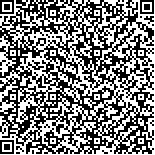Features of Water Vapor Transfer in Rainy Season and Their Relations to Rainfall Anomalies over Tibetan Plateau
- Article
- Figures
- Metrics
- Preview PDF
- Reference
- Related
- Cited by
- Materials
Abstract:
The features of water vapor transfer in rainy season (May to September) are studied based on the NCEP/NCAR reanalysis data that are used to compute the vertically integrated water vapor flux and water vapor flux divergence from 1979 to 2006. The results have shown that the main features of the water vapor transfer over the Tibetan Plateau are one monsoon, two water vapor transfer channels and three important water vapor sources. The India summer monsoon which dominates the start time of plateau’s rainy season and the motion rainfall bands, plays a decisive role in the Tibetan Plateau’s rainy season water vapor transfer. The weather stations near the longitude that northern water vapor flux reached 30 kg·m-1·s-1 would gradually come into the rainy season. The three centers of water vapor transfer divergence field in the southern border of the Tibetan Plateau are just corresponding to the plateau’s water transfer channel, and its formation is related to the terrain of Tibetan Plateau. Rainfall anomalies in Tibetan rainy season can be mainly divided into three raining patterns, they are Whole Region Pattern, EastWest Pattern and NorthSouth Pattern. These patterns are related to different water vapor transfer anomalies. For example, when it is in the whole Region Pattern the anomaly of the Somali crossequatorial flow zone is stronger.
Keywords:
Project Supported:
Clc Number:


Mobile website









